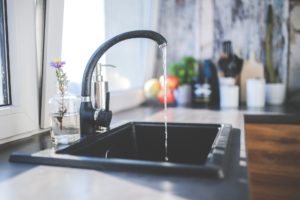10mm Hot Water Pipe – Save Water & Money
I hate it when I turn on a tap or the shower and I have to stand waiting ages for the hot water to come through. Apart from being impatient, I don’t like the thought of wasting water or what it must be doing to the power bill.
Over the past couple of years, plumbers have started using 10mm water pipes instead of the usual 15 or 20mm for hot water. (The measurements are the diameter of the pipes). Water sitting in the hot pipe cools down when it’s not being used. Because 10mm pipe holds less water than larger pipes, less “dead water” is wasted before you get hot water at the tap and the hot comes through more quickly. 10mm pipe uses approximately one-third the amount of water as 20mm pipe – so it reduces your hot water bill dramatically.
Ideally, each tap would have it’s own 10mm pipe running directly to it. In the past, one hot water pipe would be installed with numerous tee-offs to serve multiple taps. But this means draining many more metres of pipe before the hot water arrives. By re-configuring hot water pipes so each tap has it’s own 10mm pipe running directly from the hot water cylinder, the savings in water and money are extended.
We have had customers request Craig to replace their existing hot water pipe with 10mm pipe so they can enjoy the benefits of less dead water. Any accessible hot water pipe in your ceiling or under the house can be replaced with 10mm pipe. If you are renovating, it may be an opportunity to replace hot water pipes in the wall. If you are building a new house, we highly recommend installing 10mm hot water pipe.
To maximise your hot water savings, your new 10mm hot water pipes should be lagged (insulated) to retain the heat.
10mm pipes are only recommended for houses with mains pressure as the water needs the force/drive to maintain pressure. If you have mains pressure, you won’t notice a reduction in pressure if you replace your hot water pipes with 10mm.
Food for thought,
Craig & Julie.

